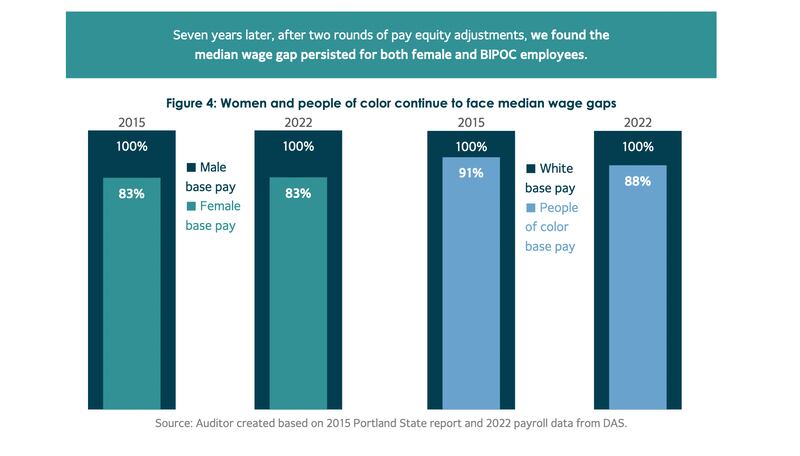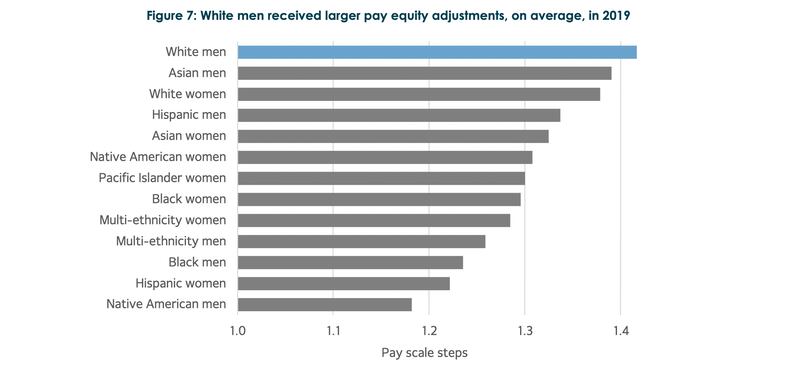Oregon Secretary of State Shemia Fagan released an analysis today of a 2017 law aimed at creating pay equity.
“What we’ve found is that despite the steps taken, wage gaps persist among state employees,” Fagan said.
The chart below that state auditors created shows that using 2015 pay as a baseline, women’s pay as a percentage of men’s has not changed, while pay for people of color lost ground.

The audit examined how pay for the state’s roughly 40,000 workers changed as a result of the 2017 law. The Department of Administrative Services, which handles the state payroll, made adjustments in 2019 and 2022.
Here’s a summary of those changes:
“In the 2019 analysis, salary adjustments were determined by each agency and resulted in 3,459 employees receiving pay increases,” the auditors found. “The 2022 adjustments were based on recommendations by a consultant hired by the Department of Administrative Services. The 2022 review resulted in 2,917 employees receiving pay increases.”
But auditors found that the 2019 pay increases went to the group already receiving the highest pay, and women got only a tiny bit more in 2022 than men.
“White men received the largest pay equity adjustments in 2019, on average, and people of color received some of the lowest adjustments,” auditors wrote. “In 2022, white men who received pay equity adjustments had an average raise of about $418 a month and white women received $419, while raises for BIPOC employees averaged $372. For example, Hispanic employees who received adjustments received an average of about $340 a month.”

“While the legislative intent behind the Pay Equity Bill was presumed to reduce existing pay gaps affecting women and people of color, the results of our data analytics show the gaps did not close,” auditors concluded.
Ian Green, one of the auditors who analyzed the numbers, offered a partial explanation for the failure of the law to make a difference.
“Women and people of color did not receive enough adjustments to change persistent wage gaps,” Green said. “Lack of access to opportunities or not accounting for unpaid labor may be contributing factors. In general, female and BIPOC employees have less seniority in state government. One reason is that women generally continue to perform a disproportionate amount of housework and child care.”

